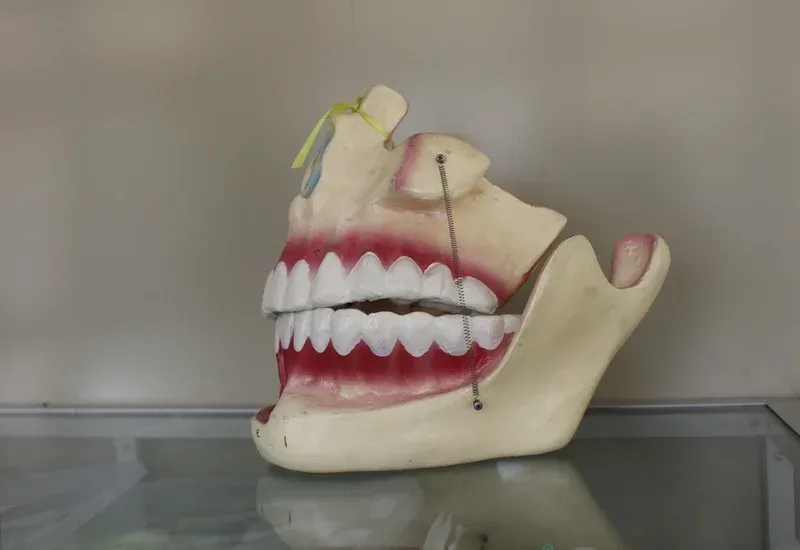
Oral Surgery Options for Jaw Alignment, TMJ, and Bite Correction

Dr. Kang
04 February 2025
Issues with jaw alignment, TMJ (temporomandibular joint disorders), and bite irregularities affect many people and can lead to many complications. These problems can impact chewing, speaking, and even sleeping. For many people these conditions also cause chronic pain in the jaw, neck, and shoulders, making everyday activities difficult. Oral surgery offers solutions for these challenges specifically.
If you’re dealing with these issues, understanding the surgical options available will enable you to make informed decisions. Oral surgery can address specific concerns, whether it's realigning your jaw, correcting a bite, or resolving chronic TMJ pain.
Why Address Jaw, TMJ, and Bite Issues?
Jaw misalignment and TMJ dysfunction can cause more than temporary discomfort. These issues can lead to persistent pain, limited movement, and even long-term damage to teeth and jaw joints. Untreated conditions often worsen over time, increasing the need for more complex interventions later. Correcting these problems early through oral surgery can improve overall quality of life and prevent further complications.
TMJ disorders, in particular, can cause symptoms like clicking or popping in the jaw, difficulty opening and closing the mouth, and recurring headaches. These symptoms often arise from stress on the temporomandibular joint due to misalignment or bruxism (teeth grinding). Oral surgery can alleviate these symptoms by addressing their root cause.
Orthognathic Surgery for Jaw Alignment
Orthognathic surgery, also known as corrective jaw surgery, is a highly effective solution for jaw misalignment. It is used to treat overbites, underbites, crossbites, and open bites. This procedure repositions the upper or lower jaw to align properly, improving both function and appearance.
The process begins with a thorough evaluation by an oral surgeon and orthodontist. Using advanced imaging, such as CBCT scans and 3D modeling, the surgical team creates a detailed treatment plan. During surgery, the surgeon makes precise adjustments to the jawbones, securing them in their new position with screws and plates. Recovery often involves wearing braces or aligners to perfect the alignment.
Orthognathic surgery offers numerous benefits beyond realignment. Patients often notice improved speech clarity, reduced jaw strain, and an enhanced facial profile. While the recovery process takes several weeks, the results are long-lasting and can significantly improve a patient’s quality of life.
TMJ Surgery: A Solution for Chronic Jaw Pain
Temporomandibular joint disorders (TMD) affect the hinge joint connecting the jaw to the skull, causing pain and restricted movement. When non-surgical treatments like medication or physical therapy fail to alleviate symptoms, TMJ surgery becomes a viable option.
Several surgical techniques are available, depending on the severity of the condition. Arthrocentesis involves flushing out the joint to reduce inflammation, while arthroscopy uses small instruments and a camera to repair damage. Open-joint surgery may be necessary for severe cases, allowing surgeons to reconstruct or remove damaged parts of the joint.
TMJ surgery can provide long-term relief by addressing the underlying cause of pain. Many patients experience improved jaw mobility, fewer headaches, and reduced muscle tension after the procedure. These results often allow individuals to resume activities they had previously avoided due to discomfort.
Bite Correction Surgery for Improved Functionality
Bite correction surgery focuses on aligning the teeth and jaw to improve functionality. It’s particularly beneficial for individuals with malocclusion (misaligned bites) that cannot be corrected with braces alone. This surgery reshapes or repositions the jaw to achieve a proper bite.
During the procedure, the oral surgeon may adjust the upper or lower jawbones to create a balanced bite. Pre-surgical orthodontic treatment is often required to align the teeth, which helps them fit together correctly post-surgery. Recovery includes follow-up appointments to monitor progress and adjust orthodontic appliances as needed.
This surgery not only enhances chewing and speaking but also prevents uneven wear on teeth, reducing the risk of future dental issues. For many patients, correcting their bite also alleviates jaw pain and improves overall oral health.
Additional Applications of Oral Surgery
Oral surgery is not just for jaw alignment or fixing bite issues. It can also treat a variety of other conditions that impact overall health and well-being.
Correcting Facial Asymmetry
Facial asymmetry caused by uneven jaw positioning doesn’t only affect appearance, it can also cause functional challenges like difficulty chewing or speaking. Oral surgery addresses these structural imbalances, improving both form and function. After surgery, many patients report enhanced confidence, as their appearance feels more balanced and natural. Functional improvements make everyday activities like eating or smiling more comfortable.
Treating Bruxism
Chronic teeth grinding, or bruxism, is often tied to jaw misalignment. Over time, grinding can wear down teeth, leading to pain and other dental problems. Surgery that corrects the jaw’s structure can reduce or even eliminate bruxism. This not only protects the teeth but also relieves related symptoms, such as jaw tension and headaches. The results are often a better quality of life and a significant reduction in dental wear and tear.

Need any help?
Contact usSleep Apnea Relief
For individuals with obstructive sleep apnea, oral surgery can be life-changing. Repositioning the jaw helps open up the airway, making it easier to breathe while sleeping. This reduces interruptions during sleep and can significantly improve rest quality. People often notice they feel more refreshed and alert after their surgery. Better sleep also lowers the risk of other health problems linked to apnea, such as heart disease and high blood pressure.
Preparing for Oral Surgery
Getting ready for oral surgery involves more than just showing up on the scheduled day. Proper preparation can make the process smoother and improve recovery outcomes.
Before the Surgery
Your oral surgeon will start with a thorough evaluation. This may include imaging like X-rays or 3D scans to get a detailed look at your oral structure. A review of your medical history can confirm if the procedure is safe and suited to your specific needs. During this stage, the surgeon will explain the steps involved and provide clear pre-surgical instructions.
You might be asked to avoid certain medications, such as blood thinners, as they could affect bleeding during surgery. Fasting instructions may also apply, depending on whether sedation or general anesthesia is being used. Plan for someone to drive you home after the procedure, as most forms of sedation make it unsafe to drive yourself.
Post-Surgery Care
Following your surgeon’s recovery guidelines is crucial for healing. Start with a soft-food diet to avoid putting pressure on the surgical site. Foods like soup, yogurt, and mashed potatoes are gentle on the mouth and easy to manage. Maintaining oral hygiene is important, but you’ll need to avoid directly brushing or rinsing the surgical area. A saltwater rinse can help keep your mouth clean without disrupting the healing process.
Attend all follow-up appointments to monitor progress and address any concerns. These visits are an opportunity to show that healing is on track and to make any necessary adjustments to your care plan.
What to Expect During Recovery?
Recovery times vary depending on the type of surgery, but some discomfort is normal. Swelling or mild soreness can be managed with prescribed medications or cold compresses. Rest is key during the initial days, so plan to take time off from work or other activities. Avoid smoking, drinking through a straw, or engaging in strenuous physical activity, as these can interfere with healing.
Is Oral Surgery the Right Choice?
While oral surgery offers effective solutions, not every jaw or bite issue requires surgical intervention. Mild cases may respond well to orthodontics, physical therapy, or lifestyle adjustments. However, for individuals with severe misalignment, chronic TMJ pain, or significant bite issues, surgery is often the best option. Consulting with a skilled oral surgeon can help determine the most appropriate treatment for your situation.
Conclusion
Jaw alignment, TMJ disorders, and bite irregularities can significantly impact daily life. Oral surgery provides solutions that address these challenges, improving function, comfort, and overall well-being. Whether you’re seeking relief from chronic pain or aiming to correct a misaligned bite, oral surgery offers lasting results. Speak with an oral surgeon today to explore your options and take the first step toward improved oral health and quality of life.
Contact your Dentist today, Dr Kang at Redwood Dental Napa, to learn more about Oral Surgery Options for Jaw Alignment, TMJ, and Bite Correction.
Share This:
Disclaimer
*This media/content or any other on this website does not prescribe, recommend, or prevent any treatment or procedure. Therefore, we highly recommend that you get the advice of a qualified dentist or other medical practitioners regarding your specific dental condition. *

